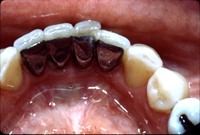 |
| Figure 1: Metal splint created from non-noble metal has been bonded with Metabond C&B cement and is being used to secure mobile teeth. |
 |
| Figure 1: Metal splint created from non-noble metal has been bonded with Metabond C&B cement and is being used to secure mobile teeth. |
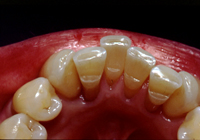 |
| Figure 2: Mobile teeth have been prepared with cingulum rests to help support an extracoronal composite-resin-based splint. |
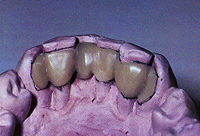 |
| Figure 3: A composite -resin-based splint has been fabricated from DiamondCrown material. Once polished, it will be ready for cementation. |
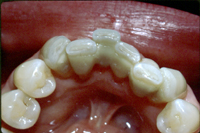 |
| Figure 4: DiamondCrown splint has been cemented (bonded) under rubber dam isolation. This material exhibits superior flexural strength and may be useful in extracoronal splints. |
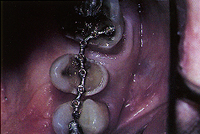 |
| Figure 5: Metal-based wire splint (Splint-Lock System, Whaledent Inc., New York, NY) is secured to mobile teeth with individual metal-based pins. The metal splint is then covered and bonded to the mobile teeth with composite resin. |
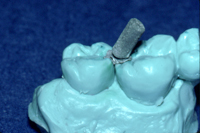 |
| Figure 6: Inlay made from non-noble metal has a handle and has been cast, fit to the master cast and etched; once the inlay is cemented in place, the handle is sectioned and removed. |
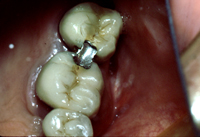 |
| Figure 7: The inlay has been cemented with Metabond C&B. The inlay remained secure after 4 years of service. |
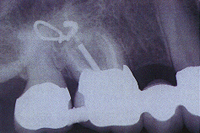 |
| Figure 8: Periapical radiograph shows the splint bonded to the 2 crowns, which are made of porcelain fused to metal. The inlay appears suspended in the porcelain portion of the restoration. |
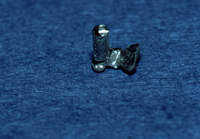 |
| Figure 9: Inlay restoration is fabricated with a handle for easy intraoral manipulation. The handle will be sectioned once the restoration is bonded in position. |
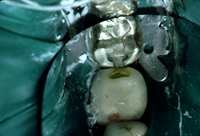 |
| Figure 10: Teeth 36 and 37 have been isolated and treated on the basis of their respective materials. The metal surface (tooth 37) has been air abraded (microetching), and the porcelain surface (tooth 36) has been etched with hydrofluoric acid. The crowns are now ready for bonding. |
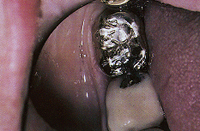 |
| Figure 11: The metal splint has been bonded in position. The splint has been functioning without complications for 3 years. |